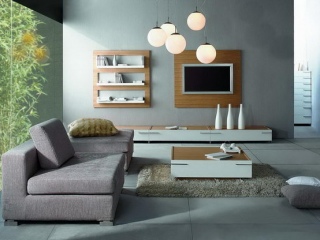
020 8531 5656
info@breway.com
Tips for Painting Your Living Room
If you don’t like the colour of the walls in your new home, you have several choices. You can paint, wallpaper, faux finish or panel them. If you love the colour that’s on your walls, work with it. If you want to start with a fresh new colour scheme, painting the room is the easiest and least expensive way to transform it.Paint
Colour is a matter of personal taste. There are certain colour combinations such as black and white or mono¬chromes that have proven to be classic because they have endured. However, today more than ever, you have a choice of so many different shades of colour that it might be hard to know where to begin.
You can’t isolate colour. When you choose a colour for your main living space, the other rooms will be affected. The colours from one room to the next should live in har¬mony. If a bright or unusual colour appeals to you, for example, perhaps you should use it in a smaller room as an accent, or in the fabrics on accent pieces such as throw pillows.
Using Colour for Effect
Colour can also be used to alleviate problems in a room. As a rule of thumb, light colours will make small rooms seem larger, dark colours make large rooms seem cosier, and vivid colours brighten a dull room. Colour can be used to make ceilings seem higher or lower. Brilliant colour can create a focal point, while deep, vibrant colour cre¬ates drama. Whatever colour palette you choose, it can have a powerful effect on your rooms.
When in Doubt
Since this is your first home, you may be unsure about colour. Don’t agonize over it. Paint every room a shade of white and get on with the decorating process. Linen white is soft and warm, but I prefer a slightly rosy white. Mixing this colour is like making a good martini. The pink is only a trace and the trick is to mix in just that little smidgen of colour needed to cut the hospital starkness. Everyone and everything in the room will have a slight glow that is barely perceptible. It’s very flattering.
Natural Colours
Many of today’s top designers are decorating with colours drawn from nature. It is a colour scheme that’s rest¬ful, sophisticated and elegant. Colours like sandy beige; shell pink, taupe, mossy green and terra-cotta are easy to mix in the form of painted walls and textured fab¬rics. Bring the outdoors in with the use of the colours in your environment. In this way your indoors and out¬doors will coexist and interplay. If you can’t bring your¬self to go with the white walls I recommended, the next best thing is the palest shade of a natural colour like sand or taupe or gray.
In southern climates, the colours used for interior de¬sign are often brighter and more vivid, hibiscus pink or orchid purple, for example, to combat the bright sun¬shine that tends to subdue colours. Pastels such as soft coral, pale lavender and celery green all look great in southern rooms.
This article was written by admin
